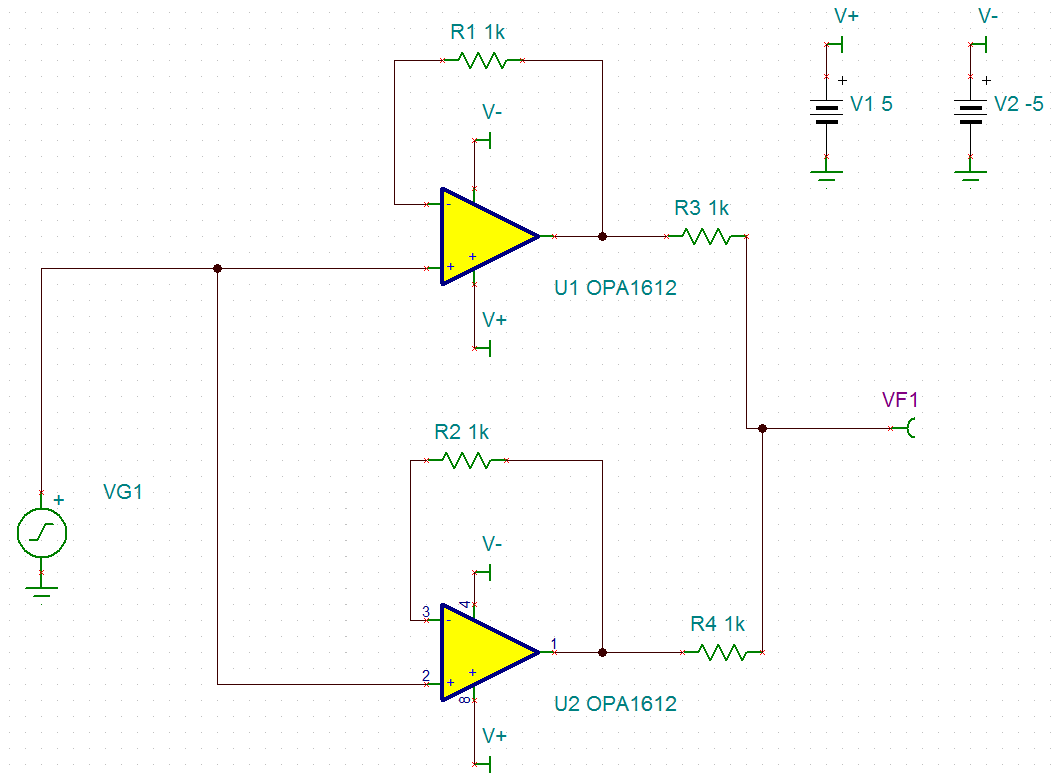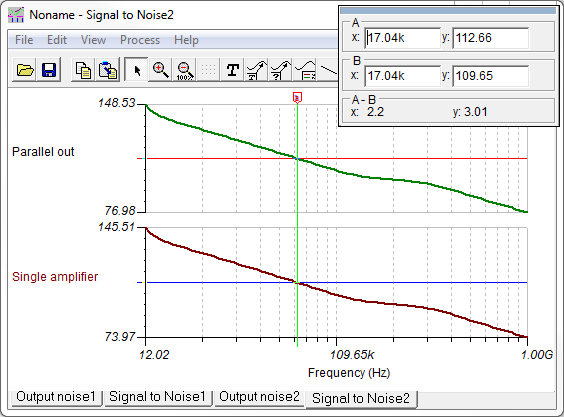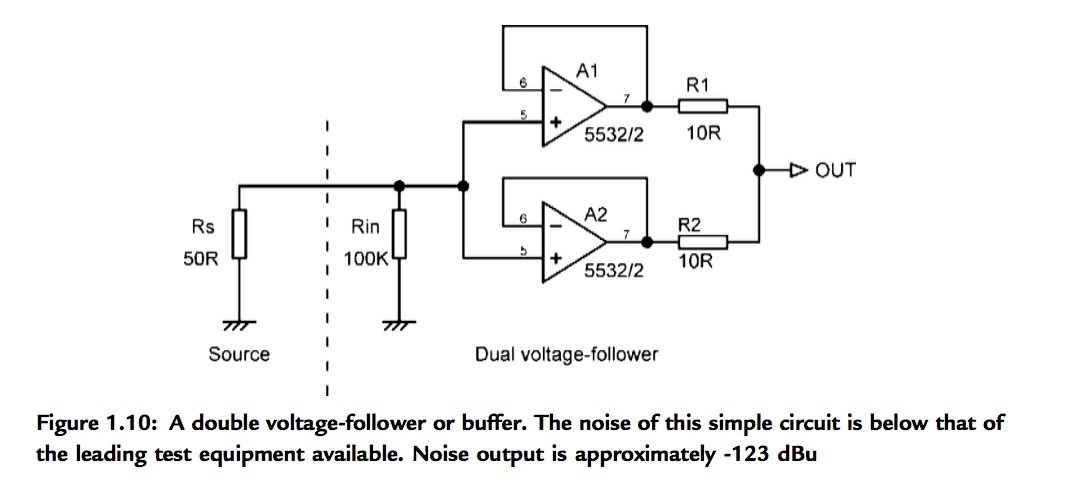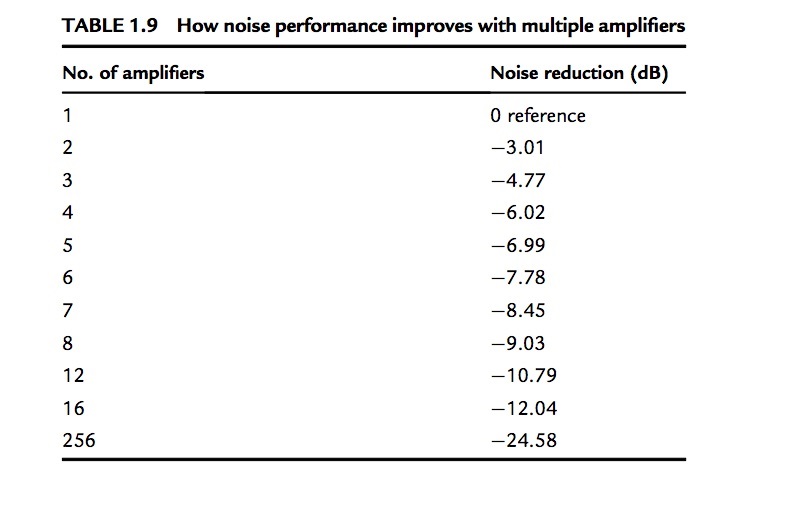Hi!
I'm trying to simulate noise performance when paralleling two OPA1612 op amps. This should lower the noise by 3 dB, but It doesn't work in Tina TI. It increases the noise. If I do the same setup in LTSpice, it works as it should. Bug or am I missing something?
Jack







